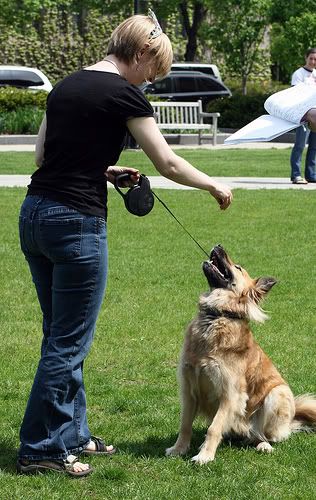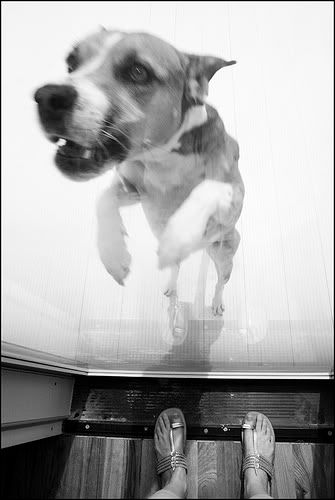Animal training is a lot like piano playing…
But some how people believe that animal training is supposed to be easy.
I wonder who started that pop culture myth that has endured for eons.
It is and isn’t true.
There are people who have trained animals all their lives and make it look easy but it really isn’t so for the average person.
If you don’t believe me, just take a look at how many people endure unruly animals on a daily basis, ask an animal professional about their client issues, or hop over to a pet forum or Q&A site to get a glimpse of the vast number of issues people face on every day.
True, animal training gets easier over time.
And like many other professions, when you have studied the science of animal training and practice those techniques on a daily basis, on a variety of animals, and in ideal cases, a number of species, you make it look easy.
If you are a pet owner who has raised and lived with a variety of animals, well I think you learn some things and hopefully acquire some skills in the process but it is always a good idea to go to dog school or kitty kindergarten!
Not too long ago a friend watched me train and then tried to imitate my actions with dismal results.
This was because she thought she understood what I was doing by watching a couple of times.
She didn’t want any coaching either and pitched a fit when her efforts didn’t work.
Like many people, she reasoned that as an adult, she had a skill set that would help her handle the situation.
But although she has some people skills, she lacks animal sense.
Many people make that similar mistake of assuming they can finish their animal training efforts without guidance.
Now you wouldn’t make that assumption about piano playing would you?
I mean, just because you have a piano in the house doesn’t mean you can play it.
You can bang on the keys or take lessons but you probably are not ready for a public recital or concert performance in a few weeks–so why do people think that animal training is much different?
It is a skill that requires study and practice.
I didn’t attempt to try and explain this to my pal and if I had any sense would probably have been insulted that she thought that she could just do what I do since I have been training animals most of my life and have a college degree in it.
What she didn’t get was that at any one time an animal trainer is assessing the situation and the nuances of what the animal is communicating, what the environment is contributing, the state of the animal and his or her positioning, and the subtle shifts that dictate that he or she progress, stay at the same criterion, or terminate the session.
 Like many people do, she erroneously thought she could just imitate my actions and successfully proceed.
Like many people do, she erroneously thought she could just imitate my actions and successfully proceed.
And that attitude is precisely what gets people into trouble when it comes to animal behavior training.
Just because you have an animal in the house does not mean you have the skills to manage or train that animal successfully. You have to learn those skills.
Now, there are things that make it easier to be successful at training and that is what I want to talk about today.
Three pieces are critical to animal training success:
- Clarity
- Consistency
- Timing
Clarity in Animal Training
When I talk about clarity in animal training, I am referring to a couple of things.
First, clarity in animal training is being clear about what is behaviorally required from the animal and how you proceed to get to that ultimate goal. This usually requires that you have a clear understanding of the steps (and progression) required to get the final behavior.
Second, you have to be able to clearly communicate what you want from the animal AND clearly understand what the animal is communicating at any given time.
Consistency in Animal Training
When discussing consistency in animal training it means that you know what criteria exists for cueing the animal and for rewarding that animal’s behavior.
Making an exception to an established rule or criteria is being inconsistent and inconsistency creates frustration in both the animal and the human.
Timing in Animal Training
One of the biggest mistakes people make when training an animal is in their timing.
There is a short window of opportunity to capture the right behavior so it can be reinforced. If you miss that window, you are actually rewarding something else.
Consequently, if you are using negative reinforcement or positive punishment, the timing is also critical.
So, this is by no means a comprehensive list of what it takes to be able to train an animal BUT it certainly includes three skills needed to proceed.
Now, I wonder what you think are the contributors to successfully training an animal. Leave your comments below.



